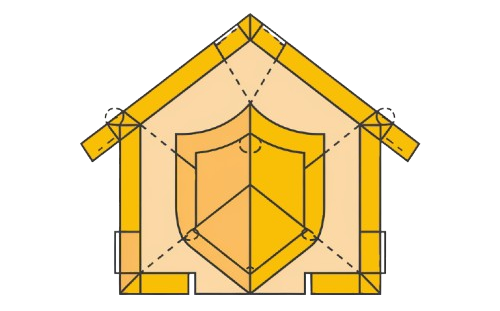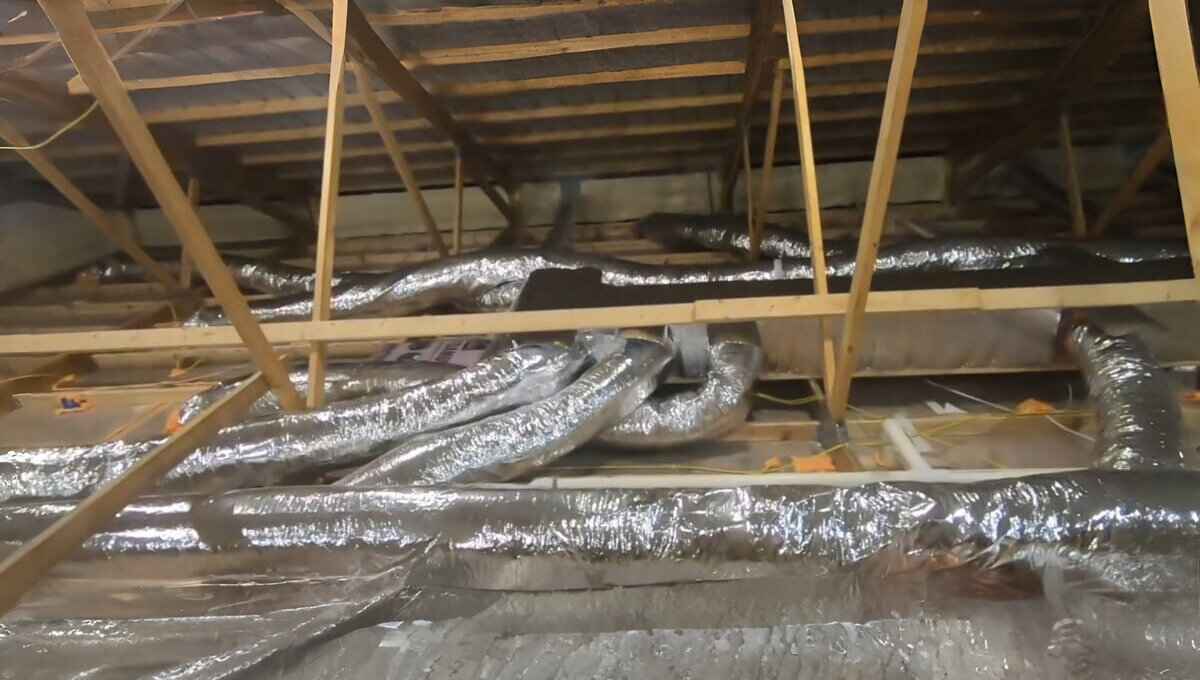Installing HVAC ductwork in your attic is an essential project that can significantly improve the heating and cooling system in your home. This installation process requires careful assessing of the attic spaces, appropriate tools, and guidance to ensure everything is done properly. Homeowners should begin by evaluating the placement and securing the ductwork for optimal air distribution. Using the right materials and following local building codes helps maintain compliance and ensures long-term energy efficiency and comfort for your home.
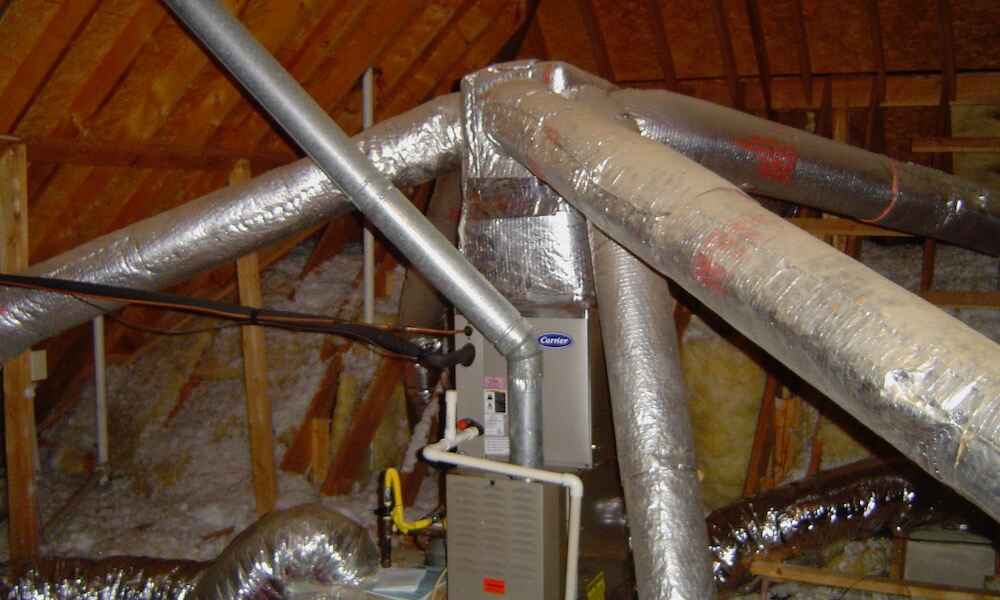
To make the process more efficient, start with a clear plan that outlines each step. This includes considering potential problems, selecting appropriate tools, and ensuring all components are installed quickly and properly. While the task may seem daunting, it can be a rewarding experience, especially for those eager to learn. Working with an experienced company or seeking professional guidance can help you avoid issues and achieve the best results. By tackling the complexities of this task with a structured approach, you can enjoy both cost savings and improved air quality.
How Attic Ductwork Works: The Fundamentals
Installing ductwork in the attic begins with grasping the fundamentals. Ductwork serves as a network of tubes that distributes air from the HVAC system to various rooms in your home. It is essential to choose between flexible or rigid types, depending on the specific needs of your attic space. The layout of the system should minimize bends and turns to maintain smooth airflow and ensure energy efficiency. Proper sealing of joints and connections prevents air leaks, which can compromise performance and increase utility bills.
For maximum comfort and reduced costs, it is vital to address insulation. Attics often experience extreme temperatures, so adding attic insulation for humidity can help reduce heat loss and improve the system’s efficiency. Using the right materials and sealing any gaps ensures the system operates at optimal levels. By focusing on a proper installation process, you can create a system that is durable, efficient, and tailored to your home’s unique needs.
Why Installing Ductwork in the Attic Matters
Installing ductwork in the attic is an essential part of enhancing your home’s heating and cooling system. Properly designed ductwork helps air circulate efficiently throughout the building, ensuring consistent temperatures and better ventilation. This can significantly improve the efficiency of your HVAC system and reduce energy costs. Additionally, effective airflow helps to minimize the risk of respiratory illnesses by promoting cleaner indoor air.
When considering installation, it’s vital to work with experts or trusted services to ensure the process is done correctly. Well-installed ductwork not only benefits your home’s environment but also allows the system to function at its best. By ensuring proper placement and sealing, the system can travel air effectively and become a valuable part of your home’s overall performance.
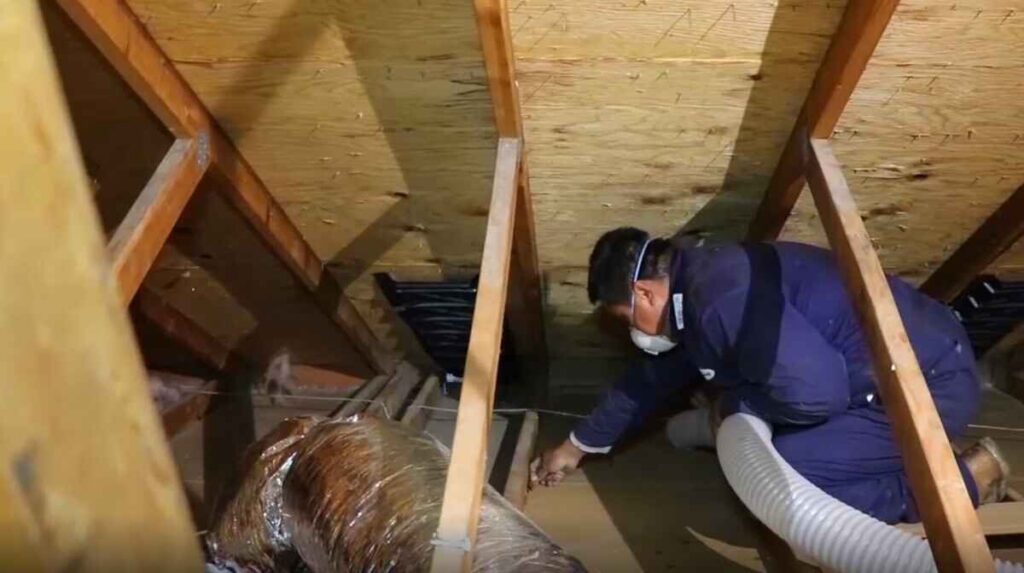
Exploring Types of Ductwork for Your Attic
Choosing the right ductwork for your attic is an important decision that depends on the types of materials available and your specific needs. The three main types of ductwork are fiberglass, metal, and plastic, each offering unique advantages. These materials are popular because they are widely used and cater to a variety of projects, whether you’re a contractor or a homeowner.
Fiberglass Ductwork
Fiberglass ductwork is lightweight and simple to install. Many homeowners and contractors prefer it because it is affordable, durable, and lasts many years. It also maintains a clean look and is easy to clean, making it a smart choice for those wanting low-maintenance solutions. Whether you plan to get it installed by a professional or take the DIY route as a homeowner, this type of ducting ensures efficiency and reliability.
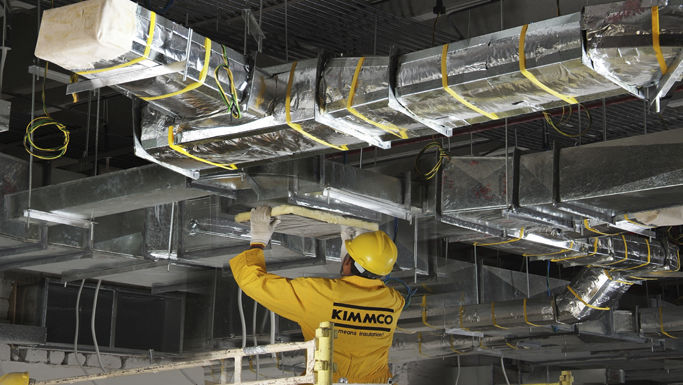
Metal Ductwork
Metal ductwork is known for being durable, efficient, and reliable, making it an excellent choice for building systems that require stability. It can withstand extreme weather conditions, such as strong winds, and provides quick and efficient cooling or heating. This cost-effective option is a great choice if you’re looking for long-lasting performance. However, it’s important to avoid potential problems during installation by securing it properly in your attic to ensure it remains functional over the years.
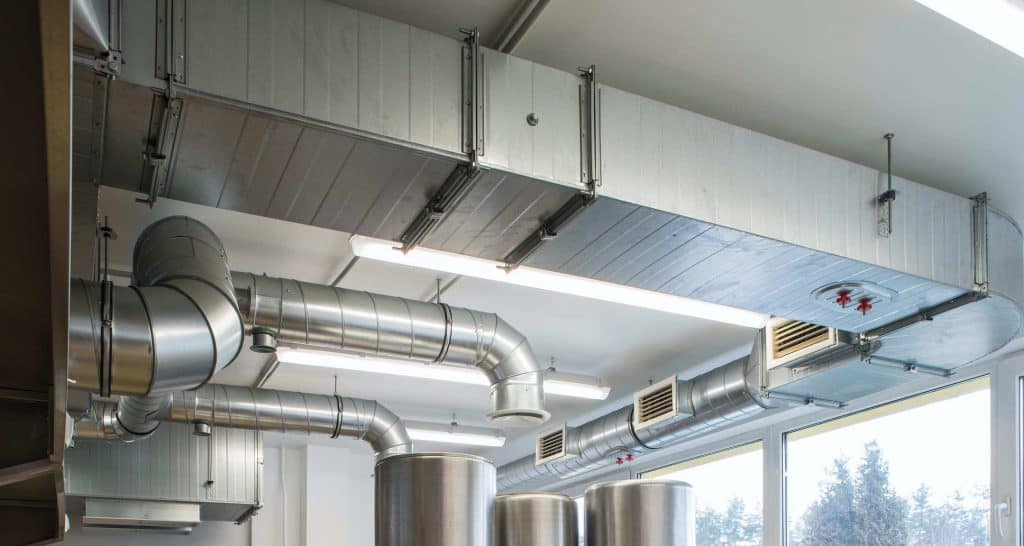
Plastic Ductwork
Plastic ductwork is a more affordable and easy-to-install option. Its lightweight nature makes it a popular choice, especially for homeowners who want to handle the project themselves. Plastic ducts are also less likely to corrode, easier to clean, and perfect for minimizing maintenance tasks. While it may not be as strong as metal, its cost and convenience make it a great alternative for certain applications.
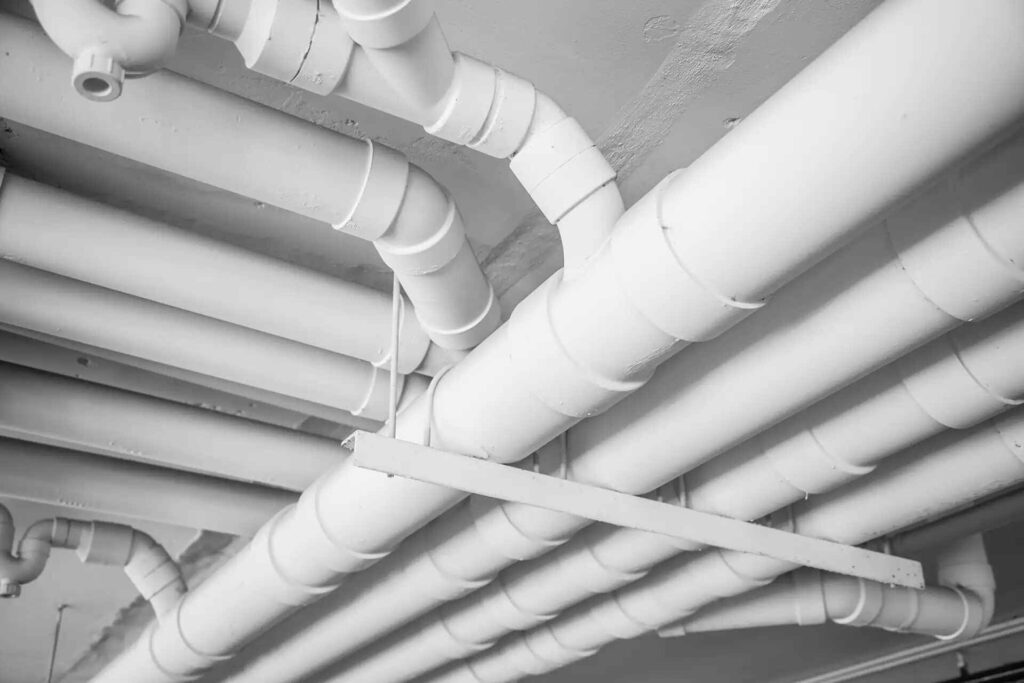
Ensuring Proper Installation
Whether you choose fiberglass, metal, or plastic, it’s essential to avoid problems by ensuring the ducts are installed securely and aligned properly. Each material comes with its own potential advantages, and understanding their characteristics will help you make the right decision for your attic’s needs.
Essential Tools for Duct Installation
Installing ductwork in your attic requires the right tools and materials to ensure a smooth, efficient process. Proper preparation is a critical step, as it helps avoid delays and ensures the task is completed safely. Some essential instruments include:
Metal Snips
Metal snips are essential for cutting ducts to the required sizes. These sharp tools allow for precise trimming of metal ducts, ensuring they fit perfectly into the designated space without misalignment.
Screwdrivers
Screwdrivers are used for fastening components during the installation process. They help secure joints and seams, making sure the ductwork stays in place and functions efficiently over time.
HVAC Foil Tape
HVAC foil tape is crucial for sealing joints and seams to create an airtight seal. This prevents air leaks and improves the overall efficiency of the duct system by maintaining smooth airflow.
Mastic Sealant
Mastic sealant is an alternative to foil tape and is used for creating durable, airtight seals at joints and connections. It provides long-lasting protection against air leaks and ensures efficient energy use.
Flexible Support (Zip Ties and Straps)
Zip ties and straps are used to secure flexible ducts in place, preventing sagging and maintaining their shape. These supports ensure that the ductwork remains intact and functional over time.
Insulation
Insulation is wrapped around the ducts to preserve energy and maintain temperature control. It reduces heat loss in winter and cooling inefficiencies in summer, enhancing the overall performance of the HVAC system.
Measuring Tape
Measuring tape ensures accurate measurements of duct lengths and distances. Proper measurements are vital to achieving a precise fit and preventing installation errors.
Staple Gun
A staple gun is used to secure insulation to the ducts. It ensures the insulation stays firmly in place, providing maximum energy efficiency and temperature control.
Gloves and Safety Goggles
Gloves protect your hands from sharp edges and debris, while safety goggles shield your eyes from potential hazards during the installation process. These tools are essential for maintaining safety throughout the project.
Instructions for Installing Attic Ductwork
Installing ductwork in your attic is an important step in improving your home’s airflow and energy efficiency. It’s essential to gather the right tools and equipment to ensure the job is done smoothly. Begin by measuring the dimensions of your attic, including the roof pitch, room sizes, and available space in the walls and ceilings. This will help you determine the type of ductwork and insulation required for the project. Always consider factors like airflow, energy efficiency, and proper fit for the ducts before starting.
Also Read: Can You Use Spray Foam on Ductwork?
Tip 1: Measure the Attic Properly for a Perfect Fit
To achieve a proper fit, carefully measure the attic space. Use a measuring tape to calculate the length and size of the ductwork needed. Mark these measurements accurately and double-check them to avoid errors. The ducts must fit seamlessly into the designated areas to maintain optimal airflow and performance.
Tip 2: Place Ductwork Accurately Using a Level
Ductwork should be placed accurately with the help of a level to ensure it is properly aligned. Once the ducts are measured and cut to the right length, use flexible tape to seal the ends securely. This step is crucial for maintaining the accuracy and durability of the installation while ensuring efficient air distribution.
Tip 3: Use Flexible Duct Tape
When installing ductwork in the attic, using flexible tape can make the process much easier and more efficient. Securing ducts in place with this tape helps to avoid damaging fragile components, such as fans or registers, during the installation. Flexible tape is also easy to remove, making it simpler to adjust or resume your original plan if needed. This ensures that the system remains functional and properly installed.
Tip 4: Insulate the Attic Walls and Roof With Reflective Insulation
Insulating the attic walls and roof with reflective insulation is a great way to keep your home energy-efficient. This method helps maintain a warm interior during winter and a cool environment in the summer, significantly reducing energy costs. By reflecting sunlight back into the sky, reflective insulation ensures your attic stays cooler in summer and warmer in winter, making it more comfortable and efficient.
Tip 5: Install Attic Venting
Installing attic venting is crucial for maintaining airflow in various climates. Venting allows hot air to escape and cool air to enter, which helps regulate the temperature in your attic and improves the overall air quality in your house. Proper venting can also save on energy bills by reducing the heat load during warmer months. By incorporating ventilation into your attic installation, you create a system that’s both efficient and cost-effective.
Tip 6: Check for Leaks Before Completing Installation
Before finishing the installation of ductwork in an attic, it’s essential to inspect for leaks. Even minor issues in HVAC systems can lead to water pooling on the floor, mold growth, or other red flags. Take the time to ensure the system is properly installed and ready for use by identifying and addressing any potential problems.
Use waterproof sealant or caulk to seal all joints, especially near vents and structural connections in the attic. Perform a smoke test or pressurized air check to detect gaps. Pay attention to strange noises during a trial run of about 30 minutes, as these can signal leaks or weak points. Fix any applicable issues immediately to avoid complications. Filling gaps thoroughly ensures your system operates efficiently and avoids future headaches.
Attic Safety Tips: Precautions While Working
Working in the attic during an HVAC ductwork installation comes with unique challenges. Your safety and well-being should always be the top priority, so following these precautions can help you avoid injuries and ensure a smooth process.
Wear Appropriate Clothing to Protect Yourself
Wearing appropriate clothing is essential when handling insulation or sharp objects. Opt for long sleeves, full-length pants, sturdy gloves, and goggles to prevent irritation or injuries from contact with materials in the attic. Insulation particles can be harmful, and accidental scrapes from tools or beams are common if you’re not prepared.
Ensure Safe Access and Visibility
Always use a sturdy ladder to reach the attic safely. Make sure it’s steady, reliable, and in the right position to support your weight. Once inside, ensure adequate lighting by using a flashlight or headlamp to illuminate your work area. This avoids hazards caused by dimly lit spaces and helps you spot potential risks.
Stay Grounded and Watch Your Step
Be cautious as you walk across the attic. Only step on secure joists or boards that can support your weight. Avoid stepping on drywall, as it can cause you to fall through the ceiling. A controlled workspace prevents unnecessary risks.
Mind the Heat and Keep Things Organized
Attics can get extremely hot, especially in summer, so stay hydrated by drinking plenty of water to avoid dehydration. Keep your workspace clean by removing debris and organizing tools to prevent tripping and other accidental injuries.
Monitor Your Health
Lastly, monitor your health for any symptoms like dizziness or shortness of breath. Take regular breaks, and if you feel unwell, exit immediately. If the project exceeds your comfort level or expertise, consider seeking professional assistance to prevent accidents.
Every safety tip you follow reduces the chance of injuries and ensures a successful outcome while working in the attic.
Solving Common Ductwork Problems
When installing or replacing ductwork in an attic, it’s normal to encounter issues that can impact the system’s performance. Addressing these common problems during planning and execution ensures your HVAC system operates efficiently and avoids long-term complications. Here are strategies to troubleshoot key ductwork installation issues effectively.
Preventing Air Leaks
One frequent issue is air leaks in the duct seams or joints, which can allow air to escape and reduce efficiency. To detect leaks, inspect all connections and apply mastic sealant or metal-backed tape. These materials ensure a secure and durable seal that won’t degrade over time. Proper sealing also helps avoid standard airflow loss, maintaining the system’s effectiveness.
Avoiding Improper Sizing
Using improperly sized ducts can create problems like restricted airflow if they’re too small or reduced efficiency if they’re too large. For optimal performance, ensure the ducts are sized appropriately to the HVAC system. If needed, consult a professional to calculate the right dimensions and avoid unnecessary adjustments later.
Managing Condensation and Noise
Condensation is another common issue, often leading to mold growth inside the ducts. To prevent this, use proper insulation combined with a vapor barrier to keep the ducts well-sealed. Similarly, excessive noise during operation can signal sharp bends or obstructions in the design. Adjusting these components can help reduce noise levels significantly.
Ensuring Proper Support
Over time, inadequate support can cause ducts to sag, compromising their integrity and performance. Install straps or supports at regular intervals to keep the system secure. This prevents sagging and ensures the ductwork maintains its alignment and airflow capacity.
By addressing these common issues early, you can save time and ensure your ductwork is reliable. For persistent problems or those requiring complex solutions, it’s always important to seek the expertise of a professional.
Final Thoughts on Installing Ductwork in Attic
When installing ductwork in the attic, ensuring the process is quick and easy comes down to following the right steps. A simple approach, as outlined in this article, can help you avoid potential problems that might arise later. By doing things correctly from the start, you create an efficient system that functions well for years. Paying attention to proper placement and sealing techniques will keep everything running smoothly and prevent unnecessary repairs down the road.
FAQ
Can You Put Ductwork in the Attic?
Yes, you can install ductwork in the attic to improve the efficiency of your home’s heating and cooling system. Proper installation allows for efficient ventilation and helps reduce the risk of respiratory illnesses caused by poor air quality. Following essential tips ensures the system works effectively.
Can I Install Ductwork Myself?
Yes, you can install ductwork in a residential setting if you have the right tools, like tin snips and a hand brake, and a basic understanding of measuring and marking. Watching a YouTube video can help, but hiring a pro may save you time if the job takes longer than expected.
What is the Disadvantage of Having Ducts in the Ceiling?
Having ducts in the ceiling can affect your HVAC system’s efficiency, especially by losing cooling during summer and heat in winter. This can increase energy consumption and make maintenance or cleaning more difficult, which is a common disadvantage.
How Much Does It Cost to Install Ductwork in Attic?
The cost to install ductwork in an attic depends on factors like the location of ducts in walls, ceilings, basements, or crawlspaces. Replacing ducts in walls or ceilings costs between $1,000 and $4,000, while basements range from $1,800 to $3,100, crawlspaces cost $3,000 to $7,300, and attics typically cost $2,200 to $5,600. The number of ducts, materials, and labor involved will also impact the final cost, depending on what is needed.
